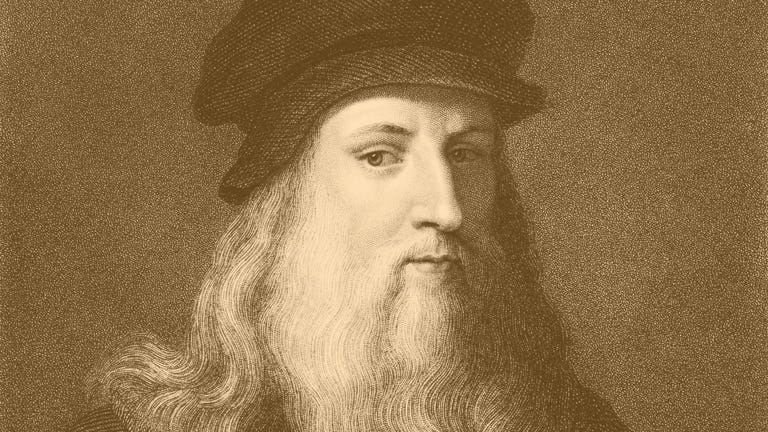Leonardo Da Vinci is the quintessential example of someone who defies a single label or identity. He was a painter, sculptor, anatomist, architect, engineer, inventor, scientist, and more—a true embodiment of the polypathic/polymathic genius that flourished during the Renaissance. His boundless curiosity and relentless pursuit of knowledge led him to explore and excel at a vast array of disciplines, leaving an indelible mark on art, science, and human understanding.
What can we learn from this master of many trades? Walter Isaacson, renowned biographer of Da Vinci, says that in his extensive study of Da Vinci, he found him to be very human with his own quirks and flaws. Often it’s easy to put a genius like Da Vinci on a pedestal and convince ourselves that there was something miraculous about them that we can never hope to achieve. While it’s true that his genius is unprecedented, I believe that it is definitely possible for future generations to learn from him, and push the limits of innovation even further.. 🙂
So let's explore how the three core characteristics of PolyPaths manifested in Da Vinci’s life — 1. Pursuit of multiple paths, 2. Intrinsic love for learning and growth, and 3. Need for a holistic identity.
Pursuit of Multiple Paths Through To-Learn Lists
Da Vinci's intense curiosity drove him to incessantly explore and experiment. His notebooks, many of which are preserved till date, are filled with "to-learn" lists, evidence of his insatiable thirst for knowledge. He wasn't content with simply observing the world; he wanted to deeply understand its underlying mechanisms. This led him to conduct experiments, dissect cadavers, and meticulously document his findings in detailed drawings and notes.
"The noblest pleasure is the joy of understanding." -- Da Vinci
His lists included very specific items such as “How do people walk on ice in Flanders?" or “What causes us to yawn?” or “How to square a circle?” or "Describe the tongue of the woodpecker." His fascination with flight led him to study birds in motion, analyzing their wing structures and flight patterns. These observations directly informed his ahead-of-its-time designs for flying machines, such as the Ornithopter. His anatomical studies and intricate drawings heavily advanced the field of anatomy.
Intrinsic Drive For Learning & Understanding
Some Da Vinci historians lament that if he had focused solely on his art, the world would have been blessed with many more masterpieces such as the Mona Lisa or The Last Supper or The Vitruvian Man. However, it was precisely his diverse interests and insatiable curiosity that elevated his artistic achievements to new heights.
If you look at some of his to-learn items – “Describe the muscles of the face." “How is light processed in the eye?” "Describe the light of the moon and the edges of shadows." – These are precisely what informed his artistic creations and enabled him to capture the human form with unprecedented accuracy and realism in his paintings.
"Study the science of art. Study the art of science. Develop your senses - especially learn how to see. Realize that everything connects to everything else." — Da Vinci
We often fall into the trap of believing that mastery comes solely from singular focus. While this is true for skill development, it doesn't necessarily hold true for problem-solving and innovation. Da Vinci's life demonstrates the power of diverse inputs and interdisciplinary thinking. By exploring seemingly unrelated fields, he was able to connect the dots, even create new dots and generate transformative ideas.
3.Need For A Holistic Identity
In a fascinating anecdote, Walter Isaacson describes Da Vinci’s “job application” to the Duke of Milan from the fifteenth century. This was when Da Vinci was already an established painter and sculptor in Florence and was looking to move to Milan to take on new challenges. Instead of leading with his artistic accomplishments, he dedicated the first ten paragraphs to his engineering skills and scientific pursuits, only mentioning his artistic talents in the final paragraph. This reveals Da Vinci's desire to be seen as more than just a painter or sculptor. He refused to be confined by existing labels, showcasing his inherent need for a holistic identity. He was not simply a painter who dabbled in science; he was a multifaceted individual who embraced the full spectrum of his abilities.
PS: What's on Your To-Learn List This Week?
Why not take a page from Da Vinci's notebook and create our own "to-learn" lists. What are you curious about? What skills do you want to develop? This is my list for the upcoming week –
What causes a song/tune to get stuck in our heads?
What makes the immortal jellyfish immortal? [I learnt about this creature in one of my son’s books — isn’t it fascinating that there exists an immortal creature?]
How does the human brain forget something? Can that be applied to machine unlearning?
Share your to-learn list in the comments below!! 🙂








My to-learn list for the week:)
1) Learning Italian
2) Exploring nuances of attention scarcity
3) Writing a free styled poetry